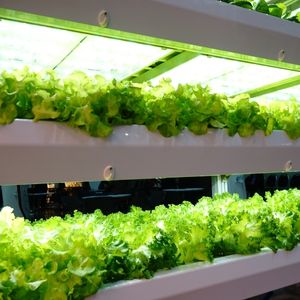
Is Vertical Farming the Future?
What is Vertical Farming?
Vertical farming is the art of growing crops in vertically stacked layers, involving controlled-environment agriculture (CEA). It aims to optimize plant growth in a smaller area, allowing 365 day growing operations. It involves soilless farming techniques including hydroponics, aquaponics and aeroponics.
The global value of indoor farming reached over $14 billion US dollars in 2020 and is expected to nearly double by 2027. The potential leveraging of advanced technology such as Vertical Farming can grow hundreds of hectares worth of crops on one equivalent hectare with such precision that produce has been considered more flavourful and often grown without the intervention of pesticides.
Government subsidies, financing, investments, and ease of vertical farm setup have enabled the emergence of small-scale container farms and start-ups worldwide. More than 90% of the global revenue share is divided among such small market players from various countries. Further, the established market players are engaged in regional expansions, acquisitions, and partnerships to gain competitive advantage.
Benefits
Vertical farming could be a great way to tackle possible food crisis’ with the global population hitting over 8 billion in November 2022.
You can harvest food all year round due to working in a completely controlled environment.
In theory, you can set up a vertical farm anywhere (warehouses, tunnels, storage facilities)
Less labour intensive throughout the year – this can be seen as a huge benefit given the difficulty bringing in labour for the agriculture and horticulture industries since Brexit
Doesn’t have the same affect on soil health as traditional intensive farming
It reduces costs on transport and fuel costs as crops can be grown in the UK for UK supermarkets.
Cons
They’re incredibly expensive to set up and involve a lot of plant trials to find the most commercially viable recipe for growth, meaning it can take a long time to become a profitable company
The price of gas and electric in 2022 has made a huge difference in costs. Given heat, light and other variables are completely controlled – prices are a lot more expensive than conventional farming.
We’re not yet able to grow all crops in vertical farming. The main focus has been in leafy salads and herbs, and the UKs first vertical farm for soft fruit has also been established this year.
Crops grown in vertical farms can hit 90% of the requirements to be officially organic, but because some aren’t grown in soil and can’t recycle nutrients back into the soil they aren’t certificated organic. However, due to the cost of production some businesses are needing to sell their products at the same price as organic products.
Sarah Want, Team Manager of Horticulture recruitment says;
Having visited a number of vertical farms across the UK, I am 100% behind the concept of vertical farming and how it can have a place in food production for our every-growing population. Traditional farming methods have worked for 100’s of years, but there’s always detriment to soil health and other factors. We’re seeing a lot historical farming land being sold off to property development, meaning the land we can utilise may be getting less.
With this being said, I don’t think that vertical farming can ever fully replace what we know now. Not all crops (at least currently) can be grown in a vertical farming environment, and a lot of businesses are still in the new ‘start up and trials’ phase.
Get in touch with Sarah for all things recruitment in Horticulture. You'll find her details and current opportunities here!
